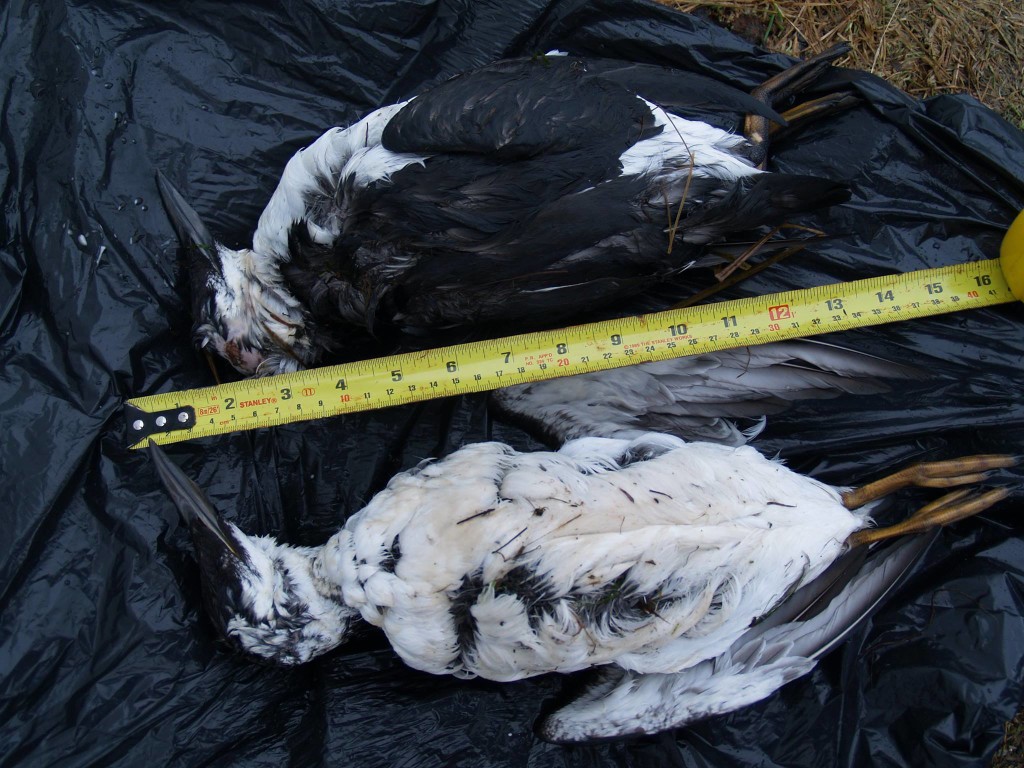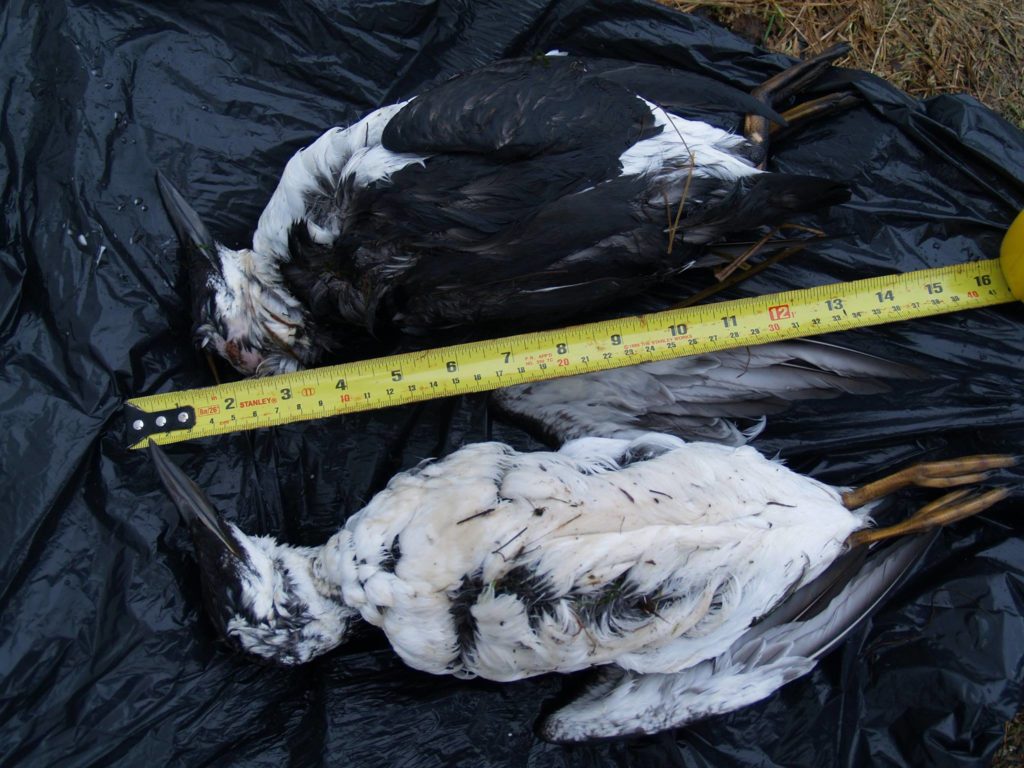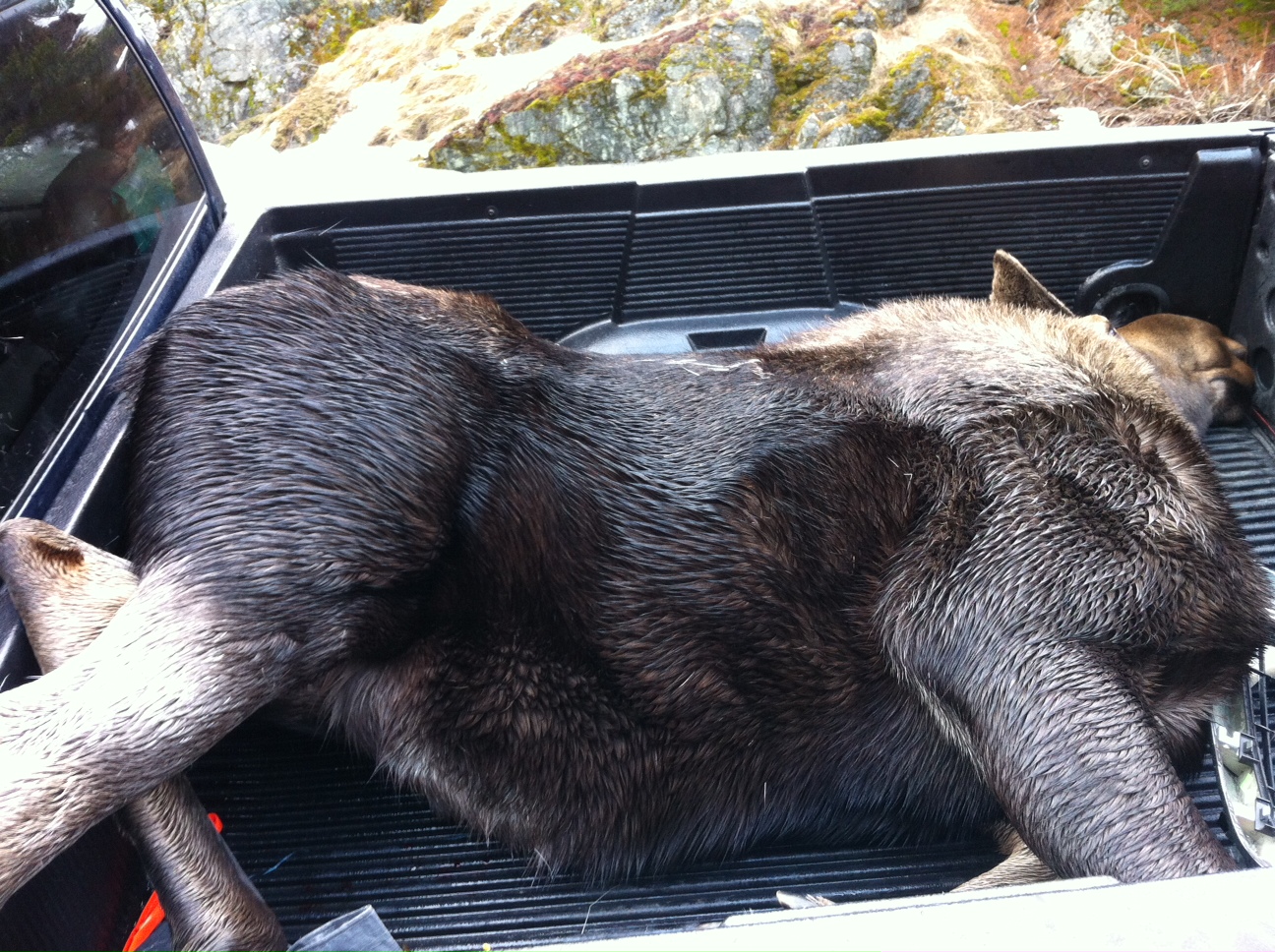
Dead murres on the beach in Haines on Jan. 12, 2016. (Tim Ackerman)
Earlier this year, dozens of dead seabirds washed up on beaches in Haines and Skagway. It wasn’t an isolated event. An estimated hundreds of thousands of dead common murres were found on shores across the West Coast.
To help keep track of incidents like this, a citizen science program is expanding its footprint in Alaska. The University of Washington Coastal Observation and Seabird Survey Team will be Haines and Skagway for trainings this weekend.
Last December, Skagway resident Elaine Furbish started noticing common murres on land, alive. The seabirds are helpless on shore, so it’s unusual for them to be found away from water. Then, in January, dead murres started washing up on Skagway shores.
“And over the next few weeks it got pretty bad,” Furbish says. “It finally ended toward the end of January and our total count of dead birds that we recovered was 67.”
The same thing happened in Haines and other coastal Alaska locations. Biologists theorized that warming ocean temperatures impacted the birds’ food sources, causing them to starve to death.
Furbish is in the Skagway Bird Club. She had heard about the University of Washington’s coastal observation team before. The murre die-off prompted her to contact the program and ask how Skagway residents could help.
“When the common murres really started to die off, which started to happen all the way back in May of 2015, we started to talk about expanding our efforts in the Gulf and down into Southeast,” says Julia Parish, director of the coastal observation team.
The program was already collecting data in some parts of Alaska, including Juneau, Homer, and the Pribilof Islands. They rely on locals, who walk a certain beach at least once a month and look for beach-cast birds.
“Folks who live in coastal marine environments know their salty backyards better than any scientist does,” says Parish. “So we capitalize on that by working with people who regularly walk a beach and tend to notice change, seasonal change and year over year change.”
The citizen scientists place their observations in a standardized format that Parish’s program trains them to use. Then she and her colleagues collect that information and create a larger picture of what’s happening up and down the coast, from California to Alaska.
“It allows us to create a larger picture of what’s happening in the environment that we could never do without all those people. So it’s the only way that we can get this information about what’s happening in the environment and then use that information to at least educate and inform people if not tune and change regulations and policies.”
Parish’s program has now expanded beyond surveying for beached birds. They’re also combing shores for marine debris. Parish says some debris can raise alarms because scientists know it’s detrimental to wildlife.
“An example of that is, is it floppy or not? Does it have loops in it? Because things that are floppy with loops tend to be very harmful to a marine mammal.”
Gathering data on marine debris allows the coastal observation team to ‘map the harm’ to wildlife. Parish says the debris monitoring program is so new that the Haines and Skagway workshops are the first trainings of their kind.
Local residents can sign up for both or either the marine debris program or the beached bird program. The Skagway workshops are this Friday and Saturday at the traditional council office. The Haines trainings are Sunday and Monday at the American Bald Eagle Foundation.
Skagway bird enthusiast Furbish notes that people don’t need to make a monthly commitment to participate.
“It does not have to be one person who goes every month to that beach,” she says. “It can be a group of people who have been trained who share that beach.”
And, there’s no obligation to become a beach comber if you attend the training. Furbish hopes putting the Upper Lynn Canal on the coastal monitoring map will help scientists better understand what’s happening to wildlife like the common murres.
More information:
MARINE DEBRIS TRAINING
Friday, June 17, 2016
4:00 – 9:00 pm
Skagway Traditional Council
11th and Broadway
Skagway, AK 99840
BEACHED BIRD TRAINING
Saturday, June 18, 2016
10:00 am – 4:00 pm
Skagway Traditional Council
11th and Broadway
Skagway, AK 99840
BEACHED BIRD TRAINING
Sunday, June 19, 2016
10:00 am – 4:00 pm
American Bald Eagle Foundation Museum
113 Haines Highway
Haines, AK 99827
MARINE DEBRIS TRAINING
Monday, June 20, 2016
4:00 pm – 9:00 pm
American Bald Eagle Foundation Museum
113 Haines Highway
Haines, AK 99827
RSVP to attend one of the trainings at coasst@uw.edu or 206-221-6893.









